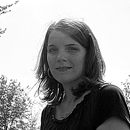I have heard a lot of buzz recently about Becky Fleck’s Scrapbook Page Maps. I was completely unfamiliar since I haven’t worked in a local scrapbook store for a couple years, I don’t pay much attention to the scrapbook idea books that do get published. I was at my local scrapbook store a couple of weeks ago and picked up a copy of Scrapbook Page Maps (2008). Of course, most of the recent buzz is that there is now a Scrapbook Page Maps 2 (2010). I figured I should read and review the original before the sequel, so here it goes.
I really don’t have any experience with sketches. I don’t sketch. I don’t follow sketches. I don’t understand their purpose. Fleck begins with an introduction about how to use sketches. Finally, I get why people sketch and use sketches. I’m not so sure I’ll begin using them, but I do understand their purpose now. In a nutshell, sketches are like recipes.
What I like about Scrapbook Page Maps:
*This book is spiral bound so that it can lay flat. What would be even better if it were completely spiral bound, so I could flip the pages completely around if I wanted.
*The back of the book contains punch out cards of every sketch in the book. The purpose is that you can carry the cards with you to a crop or to shop, which is much easier than dragging the book with you.
*Many of the pages contain tips about scrapbooking techniques in general in addition to the sketch
*The book contains both 8.5×11 and 12×12 layouts with instructions on how to convert some of the sketches from one size to another and how to convert the sketch to a card
*There are plenty of single-page and double-page sketches to fit your needs
*The book uses both traditional and digital scrapbook pages to illustrate how to use various sketches
I would like to see:
*More sketches using at least one and more than one 4×6 photograph(s). Not all scrapbookers have the time/desire/money/skill to edit photos to the perfect size for a layout. They have 4×6 photos. Some can be cropped after the fact, but not all. In my own scrapbooking, I edit and crop before I print, which means I rarely crop photos after they have printed. Most of my photos are 4×6 and will remain 4×6.
*All the pages in the book arranged in the same way. In other words, the sketch should be in the same place on every page. I liked to read the sketch first but it was not always in the same location.
*Some discussion on acid-free elements. There is a lot of debate among scrapbookers among using acid-free materials. I prefer acid-free. If I’m just using anything, then I do not need expensive acid-free supplies but can stick with construction paper and other scraps of paper I already have in my house. Some of the pages included things like hemp and tissue paper. I have no idea on if these items are archival. I think that books on scrapbooking need to state their philosophy on acid-free in their introduction so that readers know if the materials are acid-free or not.
*More explanation about how you go from sketch to layout. Some of the layouts did not look anything like the sketch IMHO. A step-by-step explanation with photos would be lovely.
My biggest problem:
Fleck talks a lot about being a scrapbooking rebel, yet discourages gender nonconformity in her book, which lines up neatly with much of the scrapbooking industry. For instance, on page 45,
At first glance, this sketch appears quite girly [it contains flowers and swirls], but with a bit of swapping and replacing, it quickly morphs into a masculine layout.
This may be my own personal issue in that I hate the enforcement of gender norms via scrapbooking products (and otherwise). I have put back stickers about dogs on a number of occasions after seeing “man’s best friend” as one of the stickers. I just don’t understand why it has to be explained how to make a page more girly or less girly or more masculine or less masculine and so forth. People are still going to know that my daughter is a girl even if her scrapbook is blue. This is a topic that will come up again in a future post, so I won’t go into any more depth here.
The best part:
The index is great. You can quickly fine sketches based on the number of photos you have or the type of layout you want to complete (e.g., 12×12 single layout).
Overall:
If you like to use sketches, you will probably really enjoy Scrapbook Page Maps: Sketches For Creative Layouts. If don’t already use sketches, you probably will not get a whole lot out of the book. You will get layout ideas for sure, but you can also get layout ideas for free online. There were not enough extra tips to warrant purchasing the book for that reason.


 Stephanie Medley-Rath is a sociologist and scrapbooker who studies scrapbooking and memory keeping. Scrapworthy Lives is a blog focused on her sociological analysis of scrapbooking, with a sprinkling of posts about Stephanie's own scrapbooking projects.
Stephanie Medley-Rath is a sociologist and scrapbooker who studies scrapbooking and memory keeping. Scrapworthy Lives is a blog focused on her sociological analysis of scrapbooking, with a sprinkling of posts about Stephanie's own scrapbooking projects.
